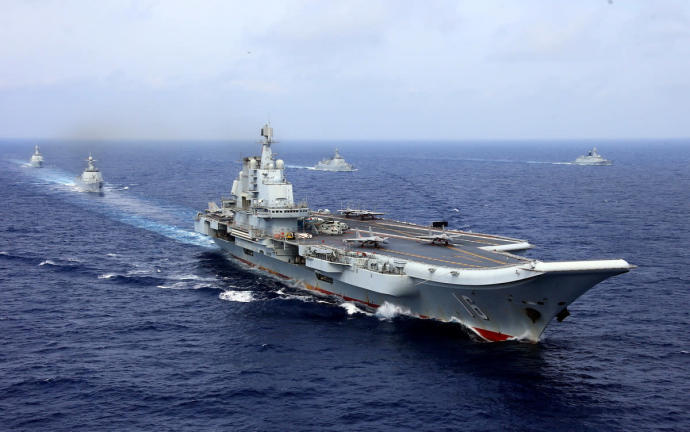With rising naval tensions with Beijing, the US Navy looks to incorporate drone ships into naval taskforces, deploying alongside US Navy aircraft carriers in Pacific fleets.
"US Navy aircraft carriers may be deploying alongside unmanned vessels by 2027 or 2028, or earlier, if I can make it happen," Adm. Michael Gilday, the service's top officer, said in a statement in February.
"US Navy aircraft carriers may be deploying alongside unmanned vessels by 2027 or 2028, or earlier, if I can make it happen."
Admiral Michael Gilday
Those drone warships "may not necessarily be completely unmanned," but that timeline would allow the Navy to "crawl-walk-run" and have those unmanned systems available "in large numbers" by the 2030s, Gilday said, pointing to the recently activated unmanned task force as a key part of that effort.
"We're doing sprints with this unmanned task force to challenge and sometimes fail so that we identify and know when we need to pivot and where we need to double down," Gilday told reporters in San Diego.
The Navy is speeding the development of unmanned ships as an affordable way to keep up with China’s growing naval capabilities amid fears of repeating costly shipbuilding blunders from recent years.

Multinational wargames
A multination naval exercise in the Pacific Ocean this summer, called RIMPAC, will deploy the four largest drone ships currently operational in the US Navy, according to The Washington Post.
Those include the Sea Hunter and Sea Hawk, diesel-powered ships equipped with outriggers for stability in rough seas. The other two are Ranger and Nomad, which are based on oil platform replenishment ships.
Based on the success of multinational exercises last winter, the 5th Fleet said the US Navy and international partners intend to deploy 100 crewless vessels by next summer.
Middle Eastern joint fleet
Amid rising tensions with Iran, the US Navy launched a new joint fleet of drones in the Middle East with ally nations to patrol huge swathes of volatile waters, Al Jazeera reported.
Smaller waterborne drones are already being deployed by the 5th Fleet in Middle Eastern waters. In 2021, its Task Force 59 was the second testing outfit for the Navy’s unmanned ships following Surface Development Squadron One (SURFDEVRON) establishment in 2019.
Vice Adm. Brad Cooper, commander of the 5th Fleet responsible for the Middle-Eastern region, stated that 100 unmanned drone ships, both sailing and submersible, will greatly increase the US Navy’s surveillance capabilities, allowing it to maintain a close check on waters vital to the global oil supply and maritime flows.
The goal of Task Force 59, led by Capt. Michael Brasseur, was to expand the operational use of unmanned platforms in the region and experiment with their concept of operations.
Instead of working mostly with unmanned aerial vehicles, the task force will help the Navy employ unmanned platforms across all domains, Cooper told reporters.
“We’re going to take today’s unmanned systems, which are largely in the air, as you know – we’ve had [MQ-1] Predators, and BAMS-D, airborne platforms out there for some time. What’s going to be different is they will be augmented with unmanned surface vessels,” Cooper said.
“We haven’t had them in the past; we have them now," he said. "It will be augmented with even more unmanned undersea vessels. We’ve had some in the past: We’re going to have a lot more in the future.”
What are the goals for the future?
The goal in coming years is to see how the radar and sensors of unmanned vessels can be combined with artificial intelligence – and integrated into taskforces with cruisers, destroyers, submarines and aircraft carriers – to create a networked fleet that’s resilient because it’s spread over greater distances and more difficult for enemies to destroy, the US Navy told The Washington Post.
“It’s about moving the technology forward and having confidence in its capability. Everything takes time,” said Cmdr. Jeremiah Daley, commanding officer of Unmanned Surface Vessel Division One in California.
